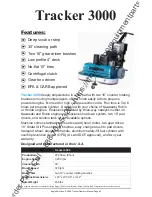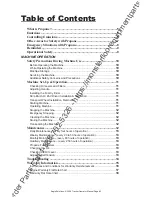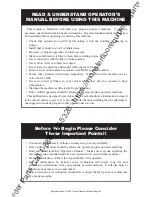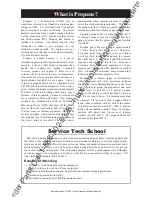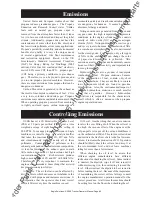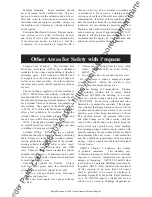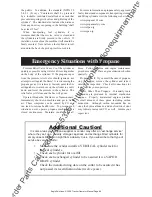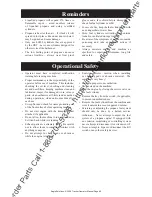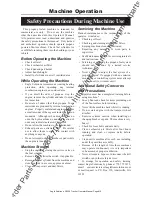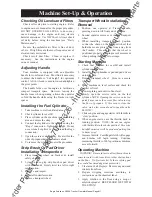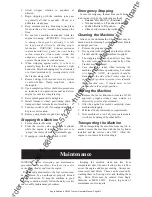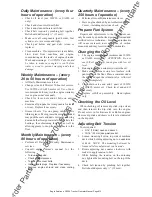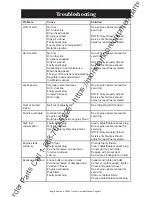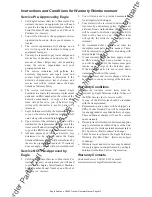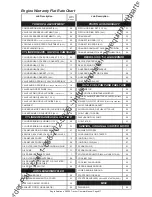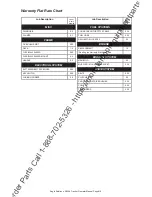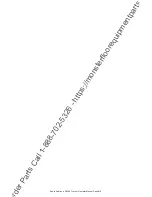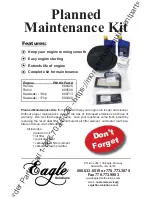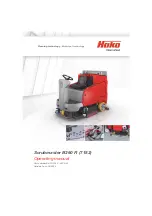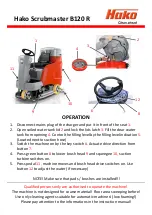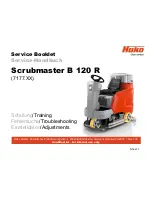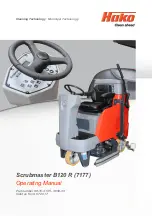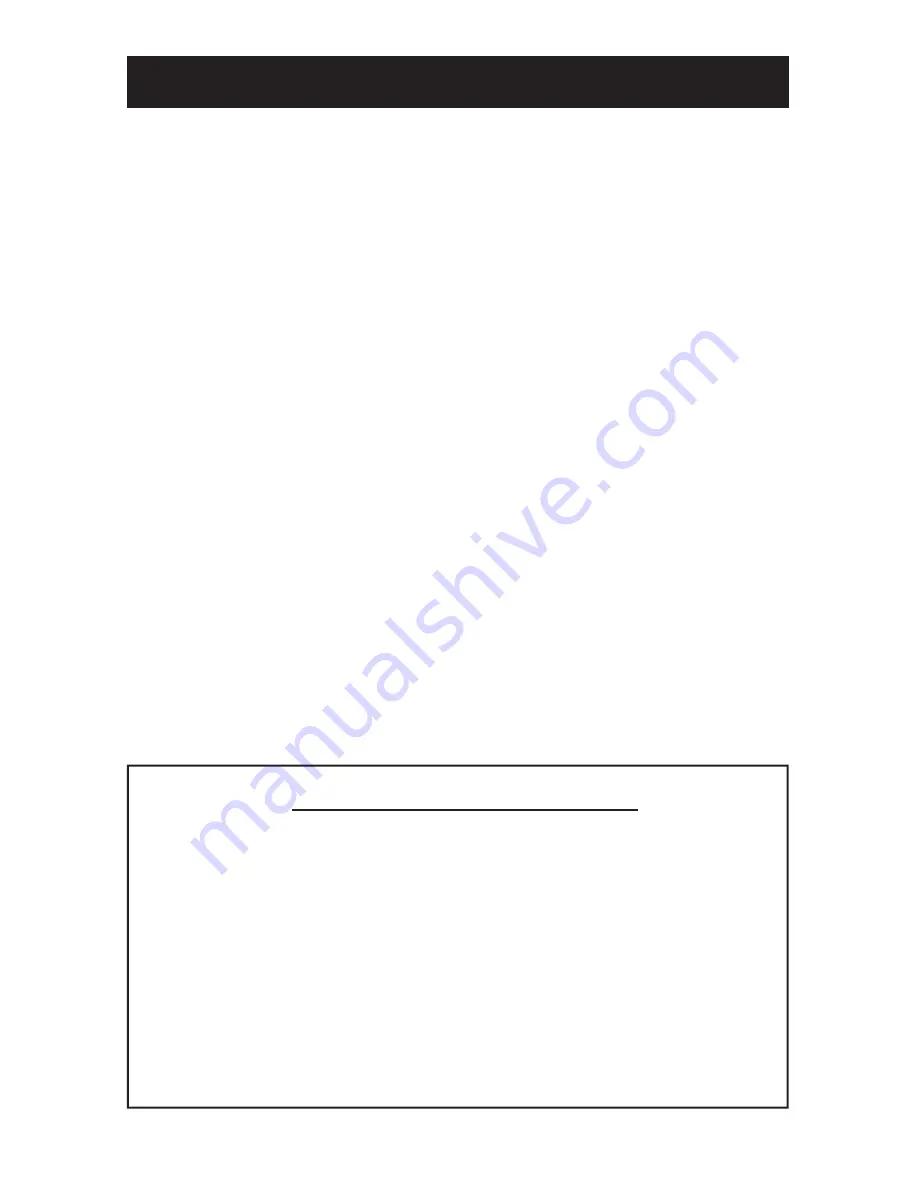
Eagle Solutions, ©2008, Tracker Operator Manual Page #
4
Eagle Solutions, ©2008, Tracker Operator Manual Page #5
Propane is a hydrocarbon (C3H8) and is
sometimes referred to as liquefied petroleum gas,
LP-gas or LPG. It is produced from both natural
gas processing and crude oil refining. The major
harmful emissions from propane engines include:
Carbon monoxide (CO), Nitrogen oxides (NOx)
and Hydrocarbons (HC). Propane, like butane or
methane, is odorless. An odorant (usually ethyl
mercaptan) is added to give propane its very
distinctive, pungent smell. The odorant acts as a
warning agent so that leaks can be detected quickly.
It is not harmful to breathe.
Propane is unique because it is a gas at
atmospheric pressure and a liquid when stored under
pressure. Like any other liquid it expands when
heated, and it expands very rapidly. Compared
to water, propane will expand 17 times more in
volume with an identical increase in temperature.
The reason for storing propane under pressure as a
liquid inside a fuel tank is to save space. A given
volume of propane vapor can be compressed into
1/270th of its volume when liquefied. Conversely, a
given volume of propane liquid can expand roughly
270 times if allowed to change back into a vapor.
Because of this expansion, propane fuel tanks are
never completely filled with liquid. New propane
cylinders are manufactured with an Overfilling
Prevention Device (OPD) that shuts off the filling
process when the tank reaches 80% of its capacity
to allow room for thermal expansion. Fuel tanks
are also equipped with pressure relief valves that
vent propane vapor if internal tank pressure exceeds
the preset rating of the valve. The valve closes
automatically when internal pressure is reduced
below this start-to-discharge pressure. This allows
for changes in fuel volume caused by temperature
variations without any release of gas from the tank.
Liquefied propane has a boiling point of -44
o
F.
If venting propane from the fixed liquefied level
gauge, be aware that the plume of gas can frostbite
your flesh.
Propane gas is heavier than air, approximately
1.5 times the specific gravity of air. Therefore,
if propane leaks from the fuel system or cylinder
it will lay close to the floor and seek low places,
like under doors. It also doesn’t puddle but instead
vaporizes and dissipates into the air. Because it
is released from a pressured container as a vapor,
propane can’t be ingested like gasoline or alcohol
fuels. Propane is a non-toxic, non-poisonous fuel
that doesn’t contaminate aquifers or soil.
Propane has a narrow range of flammability
when compared with other petroleum products
and has the lowest flammability range of any fossil
fuel. In order to ignite, the propane/air mix must
contain from 2.2 percent to 9.6 percent propane
vapor. If the mixture contains less than 2.2 percent
gas, it is too lean to burn. If it contains more than
9.6 percent, it is too rich to burn. Propane will not
ignite when combined with air unless the source
of ignition reaches between 920 - 1020
o
F and can
ignite without needing a spark or flame. In contrast,
gasoline will ignite when the source of ignition
reaches only 430-500
o
F. The propane flame will
not burn hotter than 3595
o
F.
Service Tech School
This class includes discussions on safe work environments and procedures, machine updates and
the future of the industry and Eagle Solutions. Enjoy hands on training of electrical ignition and,
starting systems, replacing of fuel systems, emissions testing, advanced failure analysis and tear down
and reassembly procedures. You will be given a plant tour and meet the customer service people you
speak with regularly on the phone. This certification program is NOT a small engines class. Although,
you do not need to be a mechanic to attend you should have a general knowledge of engines. Call
today for a class schedule, 800.633.0519.
Benefits of Attending
• Certified to work on Eagle Solutions equipment
• NFPA Certificate to work on LP-Gas equipment
• Updated on modifications and new Eagle Solutions equipment repair procedures
• A renewed appreciation for safety
• Certification can help lower liability insurance costs
What is Propane?
To Order Parts Call 1-888-702-5326 - https://monsterfloorequipmentparts.com


